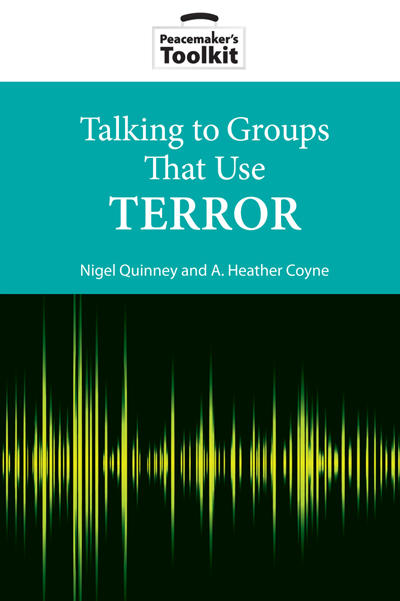Talking to Groups That Use Terror
This volume poses and attempts to answer a series of basic, but complex, questions regarding engagement of proscribed armed groups (PAGs). This handbook is part of the Peacemaker’s Toolkit series, published by the United States Institute of Peace.

Summary
This handbook poses and attempts to answer a series of basic, but complex, questions: Is there any advantage to the peace process in inviting or permitting the participation of proscribed armed groups (PAGs)? What kinds of PAGs are worth talking to and which are not? What form should the talks take and whom should they involve?
Each of the following six chapters covers a different step in the process of talking to groups that use terror:
-
assess the potential for talks
-
design a strategy for engagement
-
open channels of communication
-
foster commitment to the process
-
facilitate negotiations
-
and protect the process from the effects of violence
Print copies of this toolkit can be purchased from USIP's online bookstore.
About this Handbook
This handbook is part of the series the Peacemaker’s Toolkit, which is being published by the United States Institute of Peace. For twenty-five years, the United States Institute of Peace has supported the work of mediators through research, training programs, workshops, and publications designed to discover and disseminate the keys to effective mediation.
The Institute—mandated by the U.S. Congress to help prevent, manage, and resolve international conflict through nonviolent means—has conceived of The Peacemaker’s Toolkit as a way of combining its own accumulated expertise with that of other organizations active in the field of mediation. Most publications in the series are produced jointly by the Institute and a partner organization. All publications are carefully reviewed before publication by highly experienced mediators to ensure that the final product will be a useful and reliable resource for practitioners.



